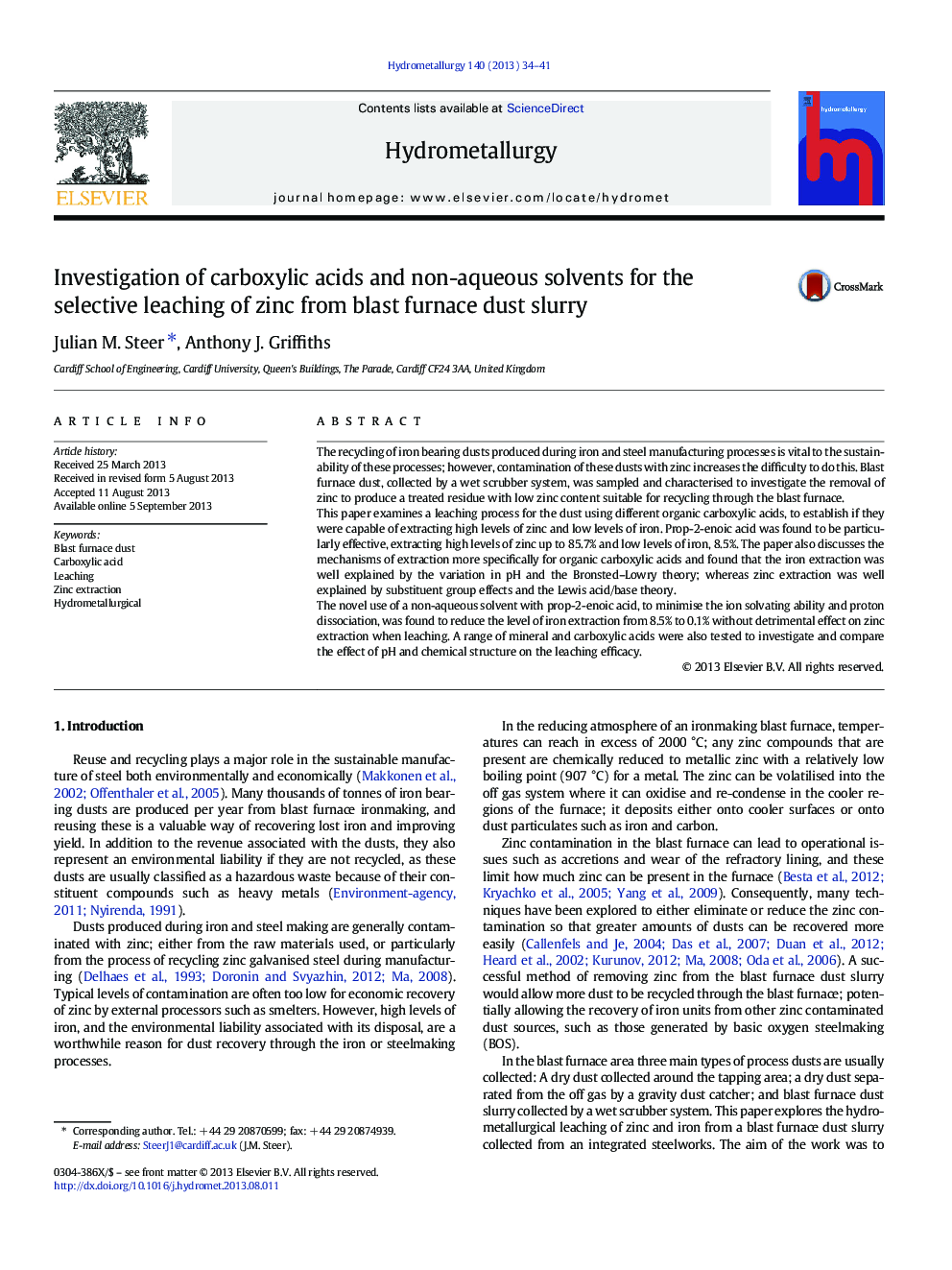| کد مقاله | کد نشریه | سال انتشار | مقاله انگلیسی | نسخه تمام متن |
|---|---|---|---|---|
| 212297 | 462041 | 2013 | 8 صفحه PDF | دانلود رایگان |

• Carboxylic acids can give high zinc extraction and low iron extractions.
• Iron extraction can be reduced by incorporating a non-aqueous solvent.
• Zinc extraction has a lower dependency on the pH compared to iron extraction.
• Zinc extraction by carboxylic acids was explained by the Lewis acid/base theory.
• Iron extraction by carboxylic acids was explained by the Bronsted–Lowry theory.
The recycling of iron bearing dusts produced during iron and steel manufacturing processes is vital to the sustainability of these processes; however, contamination of these dusts with zinc increases the difficulty to do this. Blast furnace dust, collected by a wet scrubber system, was sampled and characterised to investigate the removal of zinc to produce a treated residue with low zinc content suitable for recycling through the blast furnace.This paper examines a leaching process for the dust using different organic carboxylic acids, to establish if they were capable of extracting high levels of zinc and low levels of iron. Prop-2-enoic acid was found to be particularly effective, extracting high levels of zinc up to 85.7% and low levels of iron, 8.5%. The paper also discusses the mechanisms of extraction more specifically for organic carboxylic acids and found that the iron extraction was well explained by the variation in pH and the Bronsted–Lowry theory; whereas zinc extraction was well explained by substituent group effects and the Lewis acid/base theory.The novel use of a non-aqueous solvent with prop-2-enoic acid, to minimise the ion solvating ability and proton dissociation, was found to reduce the level of iron extraction from 8.5% to 0.1% without detrimental effect on zinc extraction when leaching. A range of mineral and carboxylic acids were also tested to investigate and compare the effect of pH and chemical structure on the leaching efficacy.
Journal: Hydrometallurgy - Volume 140, November 2013, Pages 34–41